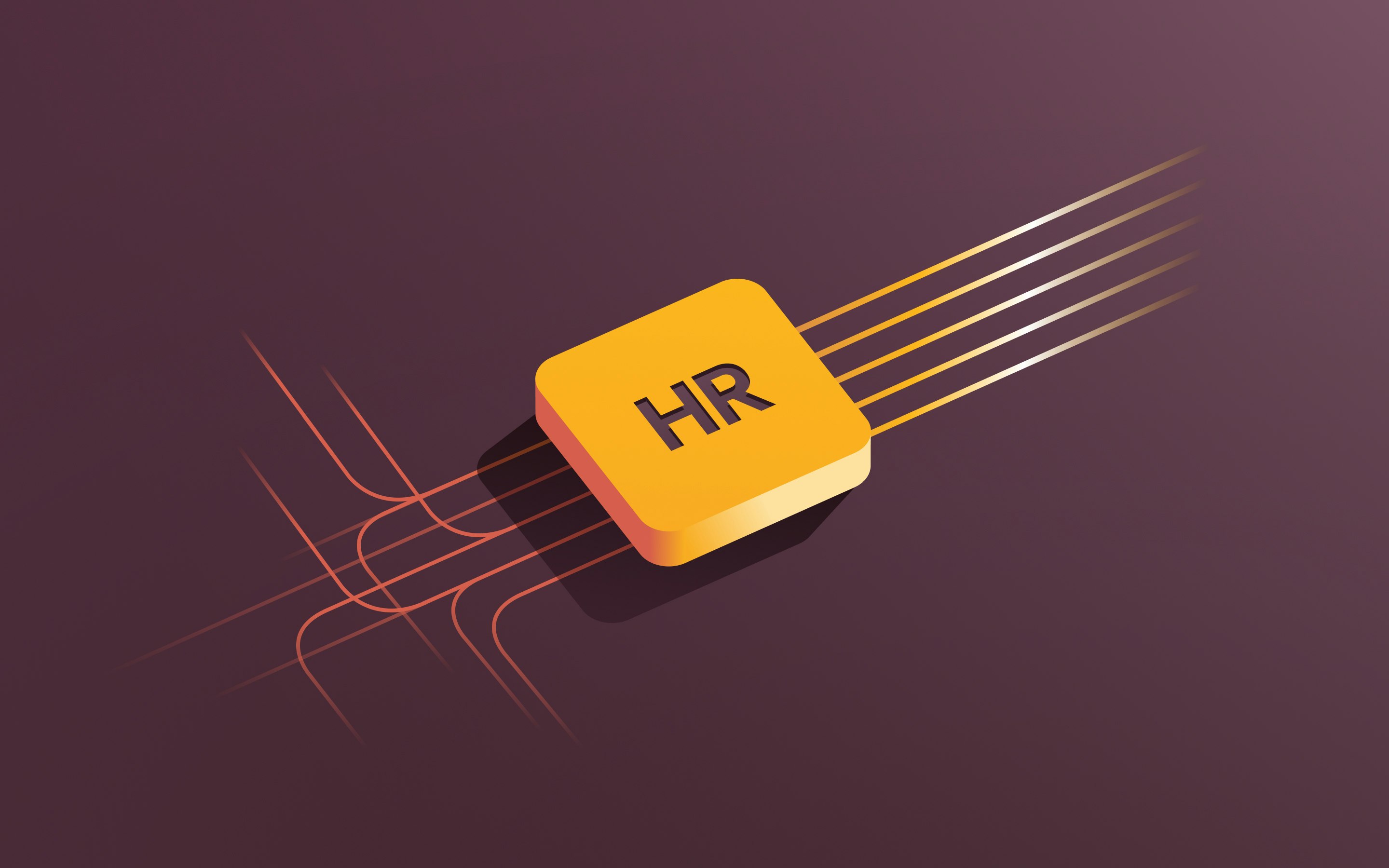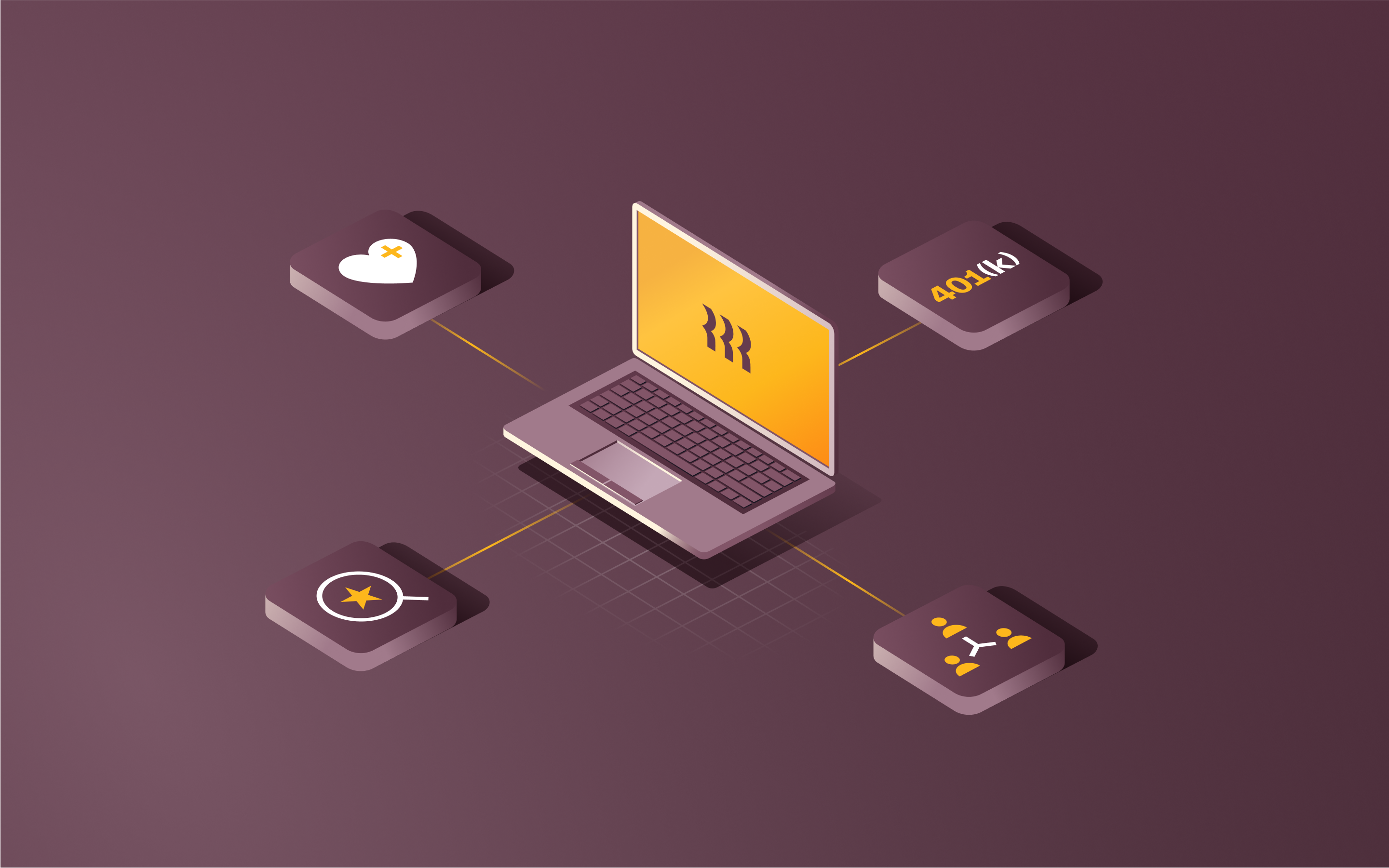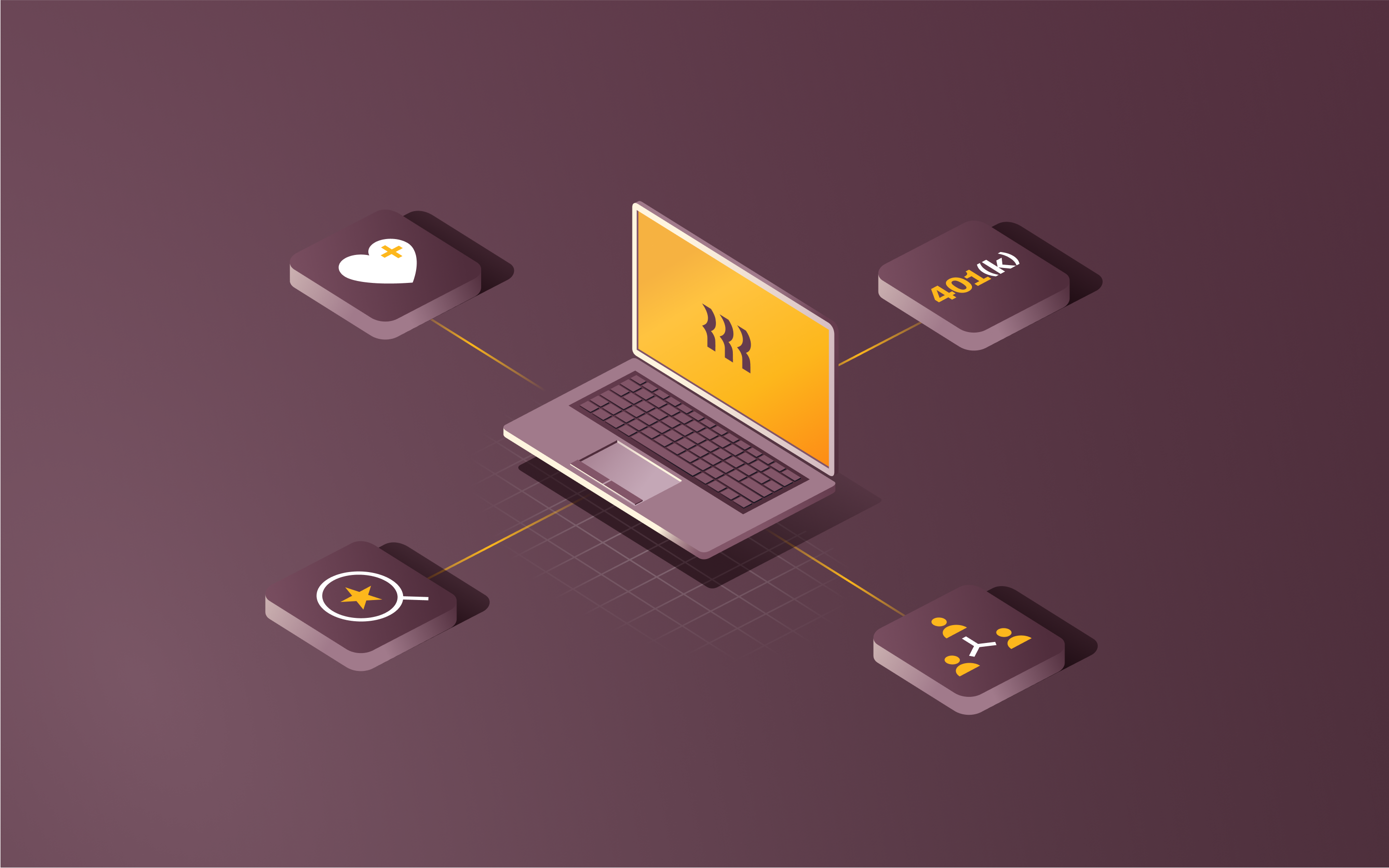HRIS vs. HRMS vs. HCM: What’s the difference?

Whether you're new to the world of HR software or have used many systems over the years, you've likely come across the acronyms HRIS, HRMS, and HCM:
- HRIS: Human Resource Information System
- HRMS: Human Resources Management System
- HCM: Human Capital Management
While these are three different HR solutions that evolved individually, and each has distinct functions and use cases, the terms HRIS, HRMS, and HCM are often used interchangeably in practice, which can create confusion around what each system does—and which one is right for your needs.
In this article, we'll explain how HRIS, HRMS, and HCM systems evolved to build upon one another as HR systems advanced over time—and how Rippling modernized these systems even more, building the first-ever fully integrated workforce management platform that brings together HR, IT, and Finance all in one place.
What is HRIS?
A Human Resource Information System (HRIS) is HR software designed to store, analyze, and manage employee data essential for core HR functions. It serves as a centralized database, helping all HR processes run more effectively, with improved accuracy and less time.
While an HRIS can't run payroll or administer benefits independently, it can help automate and streamline those tasks (along with others, like onboarding, performance management, and more) when integrated with other HR tools. Integrating an HRIS with other HR tools reduces manual work by providing necessary employee data for smoother operations.
What does an HRIS system do?
Most HRIS systems offer these key functionalities:
- Tax and payroll compliance: An HRIS system can streamline payroll processing by accurately calculating salaries, wages, and deductions for taxes and benefits.
- Benefits administration: HRIS systems help ensure compliance with employee entitlements and allow employees to enroll in benefits online.
- Time and attendance tracking: Companies can monitor working hours, PTO, and accrued balances and manage schedules through the HRIS.
- Employee onboarding: An HRIS streamlines employee onboarding by organizing documents and centralizing information, making the process more efficient.
- Personnel Tracking: HRIS software stores and updates key employee data, such as personal details, contact information, and position information.
Benefits of an HRIS
Here's what companies can get from using an HRIS:
- Improved data management: Centralizes employee data, making data entry and updating information easier.
- Automated reporting for better accuracy: HRIS systems offer standard reporting, covering metrics such as payroll information, headcount, and turnover rates, minimizing manual error while increasing efficiency.
- Basic compliance: Helps meet basic legal requirements for payroll, tax, and benefits administration.
- Efficiency and productivity: Automates routine tasks, allowing HR staff to focus on strategic work.
What is HRMS?
A Human Resources Management System (HRMS) is an HR technology that allows organizations to run various HR functions within a single platform. Unlike an HRIS, which primarily centralizes employee data, streamlining the work of other HR tools, HRMS systems integrate those tools, enabling companies to perform critical HR operations–all in one place.
HRMS software is more comprehensive than HRIS. Still, it relies on the HRIS database as a foundation for its HR functions.
What does an HRMS system do?
HRMS systems help companies automate and improve their:
- Performance management: Set employee performance standards and evaluate employees based on these criteria.
- Recruiting: Post job openings, receive online applications, and track candidates throughout the hiring process.
- Onboarding: Streamline hiring by automating paperwork and tracking training progress.
- Robust HR reporting: Generate actionable insights from analyzing company performance data.
Benefits of an HRMS
An HRMS offers:
- Broader functionality: Integrates multiple HR functions, including recruiting, onboarding, and performance management.
- Enhanced compliance: Supports robust compliance across various HR areas, monitoring adherence to regulations.
- Advanced reporting: Delivers more in-depth analytics to help companies gain valuable insights and facilitate strategic HR decision-making.
What is HCM?
Human capital management (HCM) refers to two key aspects:
- HR practices: A set of practices an organization uses to recruit, manage, develop, and, ultimately, optimize its workforce and
- Technology: Digital solutions that facilitate these HR practices.
HCM software is a comprehensive, cloud-based HR solution that provides a powerful tool suite to help organizations close the gap between HR initiatives and their overall business strategy. Unlike HRIS and HRMS, which focus on managing employee data and payroll processes, HCM supports HR strategic objectives through functionalities such as workforce planning, employee engagement, and talent management.
What does an HCM system do?
By taking a holistic approach to the employee experience through development, training, and career progression tools, HCM software aims to drive employee engagement and maximize ROI on human capital. While HRIS and HRMS systems may offer some collaboration tools, HCM solutions offer better-integrated functionalities that are critical for fostering a connected workplace culture.
HCM systems offer and manage the following components:
- Administrative HR functions: Handles employee information, payroll, and benefits administration and provides employee self-service portals.
- Company data: Offers access to company documentation and maintains an organizational knowledge base.
- Talent management: Includes features for posting job openings online, applicant tracking, recruiting, onboarding, training, performance tracking, and overall employee management.
- Labor and workforce management: Facilitates budgeting, time and attendance tracking, and scheduling.
Benefits of an HCM
Benefits of HCM systems:
- Improved company culture: Promotes a supportive working environment by empowering employee engagement and development.
- Enhanced employee satisfaction: Can boost job satisfaction by providing tools for recognition, feedback, and professional growth.
- Better decision-making: Enables companies to gain data-driven insights, facilitating strategic HR and business decision-making.
Today's HCM solutions often incorporate more advanced tools like AI and data analytics, enabling them to handle strategic talent management tasks, such as employee performance management, succession planning, and compensation planning.
The important thing to know is that these types of HR systems do more than execute HR tasks. Instead, they integrate HR into a larger business strategy, helping companies leverage their workforce effectively to achieve broader business goals.
HRIS vs. HRMS vs. HCM
People tend to use all three terms interchangeably, which is logical because they share some similarities. However, the differences between HRIS, HRMS, and HCM systems are distinct and important.
Let's discuss both similarities and differences.
HRIS vs. HRMS vs. HCM: How are they similar?
As you may have noticed, all three systems are designed to streamline HR functions, differing in scope, complexity, and urgency. So, if we were to define a key similarity between HRIS, HRMS, and HCM, it would be that each system focuses on an employee lifecycle through distinctive functionalities.
As such, these three overlap in functions. HRIS is the foundation tool upon which the other two solutions are built. HRMS is an upgraded version of HRIS, while HCM encompasses all HRIS tools and some elements of HRMS while offering additional features that may not be available in HRMS systems.
HRIS vs. HRMS vs. HCM: How are they different?
HRIS vs. HRMS: The key difference between these two solutions is their scope and complexity. An HRIS primarily stores employee data and enables data entry, processing, and analysis, serving as a foundation for other HR tools. In contrast, an HRMS is a more comprehensive platform that includes those fundamental tools while offering additional functionality like performance management.
HCM vs. HRIS: When discussing HCM vs. HRIS, what separates (or we could say connects) these two is that HCM is built on all HRIS systems and processes. However, the HCM goes further by enabling additional HR operations, including:
- Employee onboarding
- Performance evaluation
- Job role mapping
- Salary and benefits benchmarking
- Global regulatory compliance
- Advanced HR data analytics
HCM vs. HRMS: An HRMS facilitates HR functions such as employee performance evaluations and recruiting. In contrast, HCM systems offer a broader strategic approach to managing human capital through employee development initiatives and fostering collaborative culture that sees organizational growth as the result of individual progress. An HCM leverages all HRIS tools and offers advanced features that go beyond those found in HRMS systems.
When companies consider implementing one of the three solutions, they should take into account the size of their business and the complexities of their HR operations. A small or early-stage business with basic HR needs could do just fine with an HRIS.
In contrast, larger organizations may require more comprehensive systems like HRMS or HCM. The choice between these two depends on whether they aim to streamline workflow management or implement HR strategies into their overall business strategy.
Rippling: The best all-in-one HCM system
Just like HRMS solutions built on HRIS software, and HCM solutions built on HRMS software, Rippling builds on HCM solutions to create the next generation of HR software.
Rippling is the next iteration beyond HRIS, HRMS, and HCM: It's a workforce management platform—the first platform to offer HR, IT, and Finance all in one place.
With Rippling, you have all your HR tools built in:
- Pay your entire workforce, in the US and globally, in their local currency and in a single pay run
- Easily track employees' time and attendance and seamlessly sync hours to payroll—no manual data entry required
- Administer benefits, from 401(k) to health insurance, in the same system with no busy work
- Keep all your recruiting data up-to-date and sync changes across applications
- Additional tools for headcount planning, compensation bands, learning management, performance management, employee engagement, and more
Plus, IT tools:
- Automatically and securely connect employees with app accounts when you onboard them—because IT and HR are in the same system
- Remotely set up, secure, and manage your employees' devices
- Single sign-on, password management, device shipping and storage, and more
And Finance tools:
- Review, approve, and reimburse employee expenses
- Issue branded corporate cards, control employee spending, and reconcile accounts
- Create custom spending policies based on any employee data—because it's all in the same system
Plus, unlock the most powerful workforce reporting and analytics capabilities in existence. With other systems, data is scattered across your HR, IT, Finance, and third-party tools. With Rippling, it's all in the same platform, so you can create any report you want—including calculating and combining multiple datasets and filtering them in endless different ways.
Rippling is the only fully integrated workforce management platform, designed to meet today's business needs.
This blog is based on information available to Rippling as of November 12, 2024.
Disclaimer: Rippling and its affiliates do not provide tax, accounting, or legal advice. This material has been prepared for informational purposes only, and is not intended to provide or be relied on for tax, accounting, or legal advice. You should consult your own tax, accounting, and legal advisors before engaging in any related activities or transactions.









